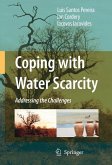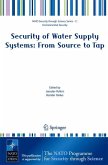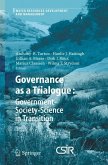One of the main problems confronting the world of the 21st Century is a shortage of water. There is already severe scarcity in many regions of the world, causing tremendous problems for local populations and indeed entire societies. There is insufficient water available for the production of food to alleviate poverty and starvation; the lack of water hampers industrial, urban and tourism development, forcing restrictions on other sectors, especially agriculture; health problems arise as the deterioration of ground and surface waters favours water-borne diseases, which flourish in the absence of decent water distribution and sewerage systems. Water conflicts still arise in areas under stress, while water for nature has become a vanishing priority in such zones.
This book is a guide to the establishment of regional and/or local guidelines for developing and implementing new ideas for coping with water scarcity. The basic premise underlying the book is that water scarcity will persist, so personal, human and society-wide skills will be needed to cope with it while living in harmony with the necessary environmental constraints. The book provides basic information to assist decision makers, water managers, engineers, agronomists, social scientists and other professions (and their students) in formulating coherent, hopefully harmonious and consolidated views on the issue. Guidelines are also given for introducing the general public to the concept of water scarcity and how to deal with it.
This book is a guide to the establishment of regional and/or local guidelines for developing and implementing new ideas for coping with water scarcity. The basic premise underlying the book is that water scarcity will persist, so personal, human and society-wide skills will be needed to cope with it while living in harmony with the necessary environmental constraints. The book provides basic information to assist decision makers, water managers, engineers, agronomists, social scientists and other professions (and their students) in formulating coherent, hopefully harmonious and consolidated views on the issue. Guidelines are also given for introducing the general public to the concept of water scarcity and how to deal with it.
From the reviews: "This 2002 revision of the UNESCO publication consists of 12 chapters in 357 pages covering a problem that is widespread and growing. ... The book also examines alternative water resources ... conserving water in various situations, constraints ('social, economic, cultural, legal and institutional'), and educational needs. This work covers the area comprehensively and in sufficient detail to meet its stated goals and to illuminate the discussion and planning needed to meet the challenge of water scarcity. Summing Up: Recommended. Upper-division undergraduate through professional collections." (D. A. Vaccari, Choice, Vol. 47 (3), November, 2009)








